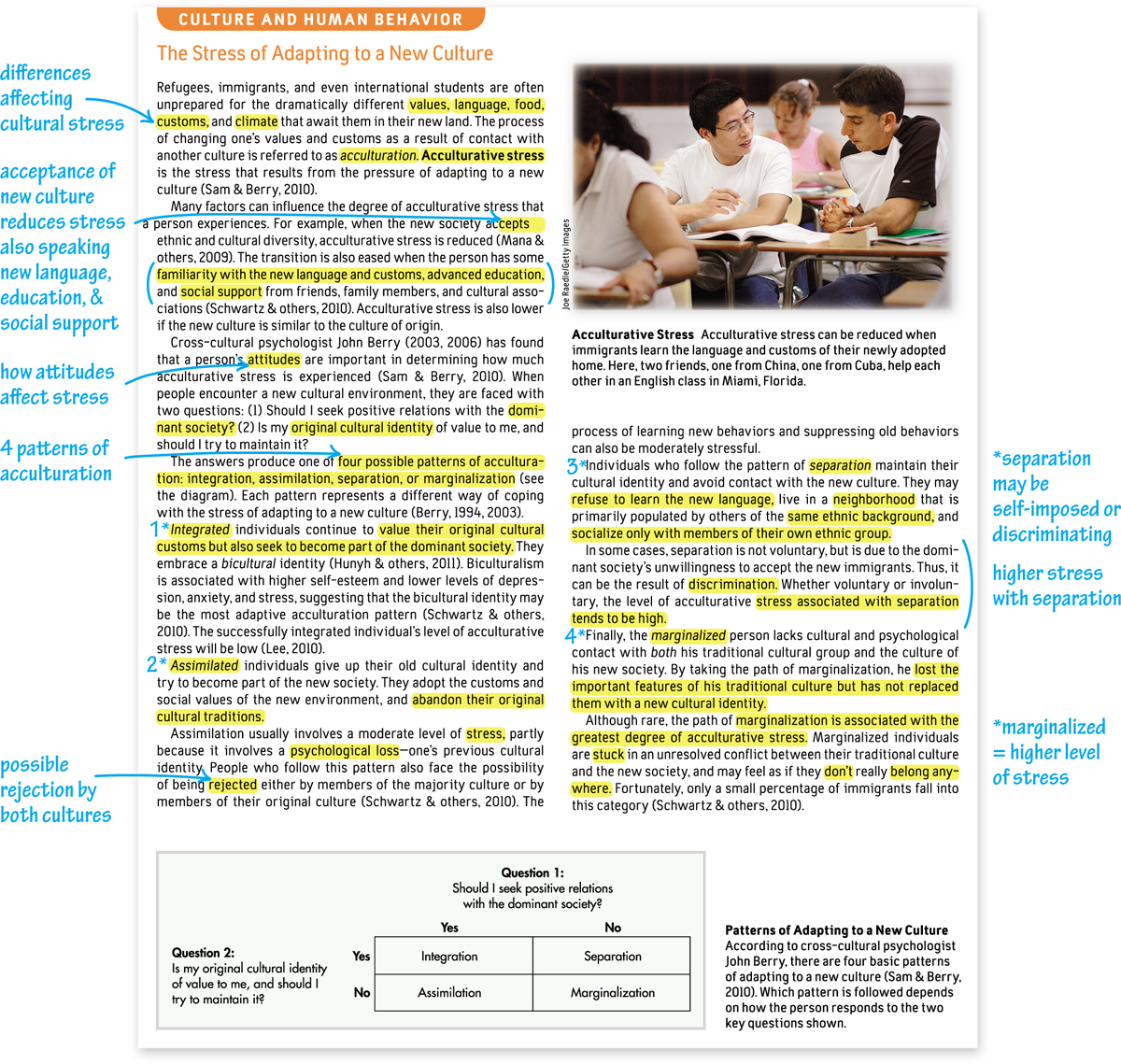Strategies for Marking Your Textbook
After completing your preview, you are ready to read the text actively. With your map, outline, list, or flash cards to guide you, mark the sections that are most important. To avoid marking too much or marking the wrong information, first read without using your pencil or highlighter. This means you should read the text at least twice.
Marking is an active reading strategy that helps you focus and concentrate as you read. When you mark your textbook, you underline, highlight, or make margin notes or annotations. Annotations are notes or remarks about a piece of writing. Figure 6.4 provides an example of each method: No matter what method you prefer, remember these important guidelines:

FIGURE 6.4  Examples of Marking
Examples of Marking
Using a combination of highlighting, underlining, and margin notes, the reader has made the content of this page easy to review. Without reading the text, review the highlighted words and phrases and the margin notes to see how much information you can gather from them. Then read the text itself. Does the markup serve as a study aid? Does it cover the essential points? Would you have marked this page any differently? Why or why not? Source: Adapted from Discovering Psychology, 6th ed., p. 534, by D. H. Hockenbury and S. E. Hockenbury. Copyright © 2013 by Worth Publishers. Used with permission.
Hockenbury and S. E. Hockenbury. Copyright © 2013 by Worth Publishers. Used with permission.
- Read before you mark. Finish reading a section before you decide which are the most important ideas and concepts.
- Think before you mark. When you read a text for the first time, everything can seem important. After you complete a section, reflect on it to identify the key ideas. Ask yourself: What are the most important ideas? What terms has the instructor emphasized in class? What will I see on the test? Knowing the likely answers to these questions can help you avoid marking too much material. On a practical note, if you find that you have made mistakes in how you have highlighted or that your textbooks were already highlighted by another student, use a different color highlighter.
- Take notes along with marking. If you only make notes or underline in your textbook, you will have to read all the pages again. Rather than relying on marking alone, consider taking notes as you read. You can add your notes to the map, outline, list, or flash cards that you created while previewing the text. These methods are also more practical if you intend to review with a friend or study group. One more step in the note-taking process—putting your notes in your own words—will help you learn the material. When you rewrite your notes in your own words, you are not only predicting exam questions but also evaluating whether you can answer them.
A few words of caution about marking: For some students, highlighting or underlining is actually a form of procrastination and can lead to a false sense of security—just noting what’s most important doesn’t mean you’ve learned the material. Some students highlight or underline nearly everything they read, which does more harm than good. Remember, highlights and underlines are intended to pull your eye to key words and important facts. You won’t be able to identify important concepts quickly if they’re lost in a sea of color or lines. Ask yourself whether highlighting or underlining helps you take a more active role in your learning process. If not, you might want to try a different technique, such as making margin notes or annotations.